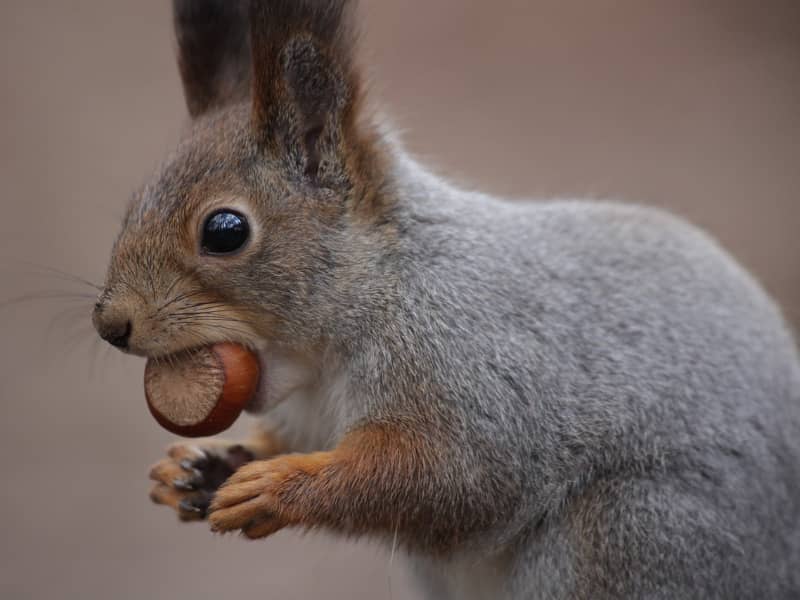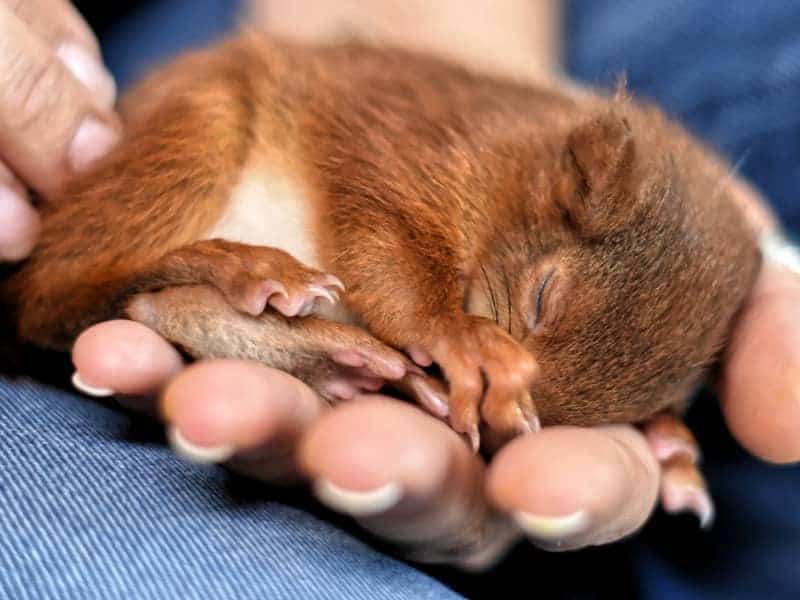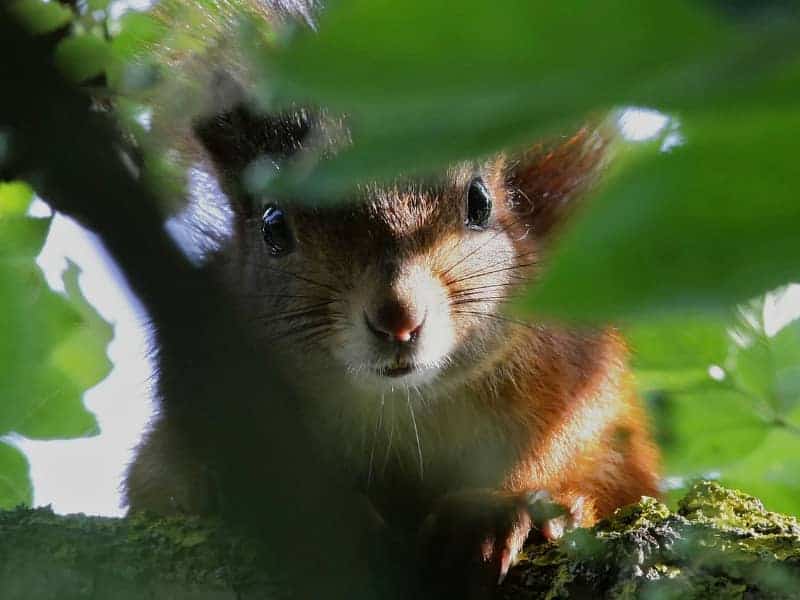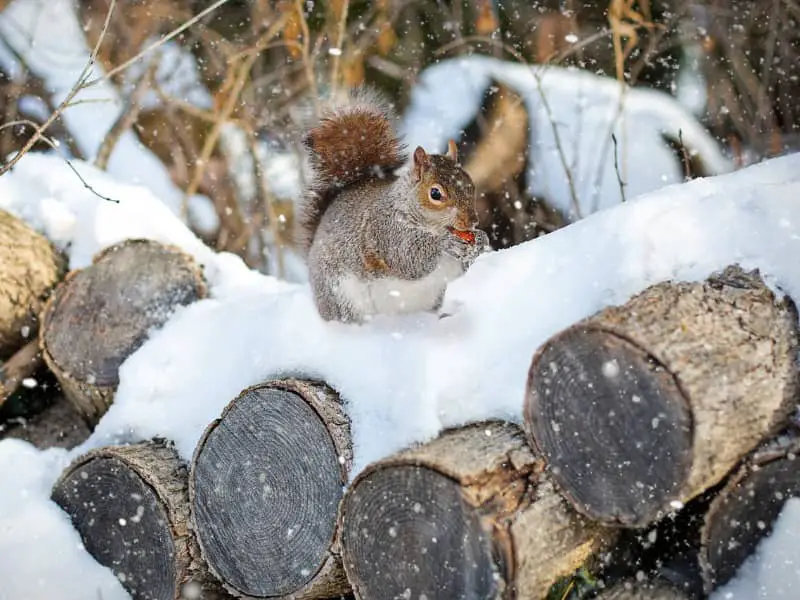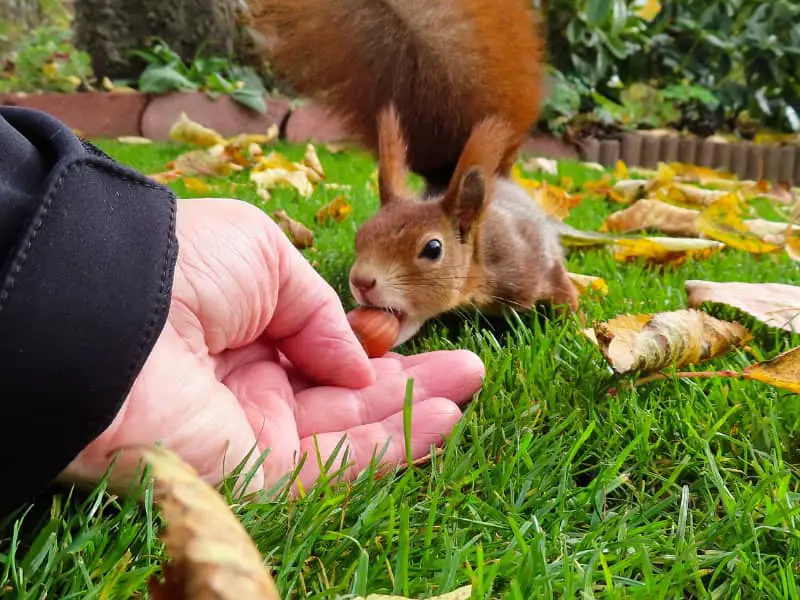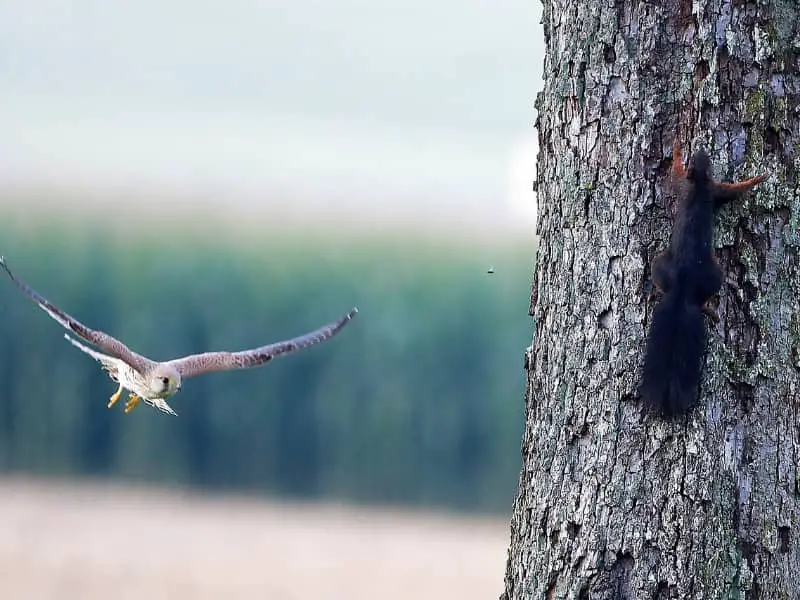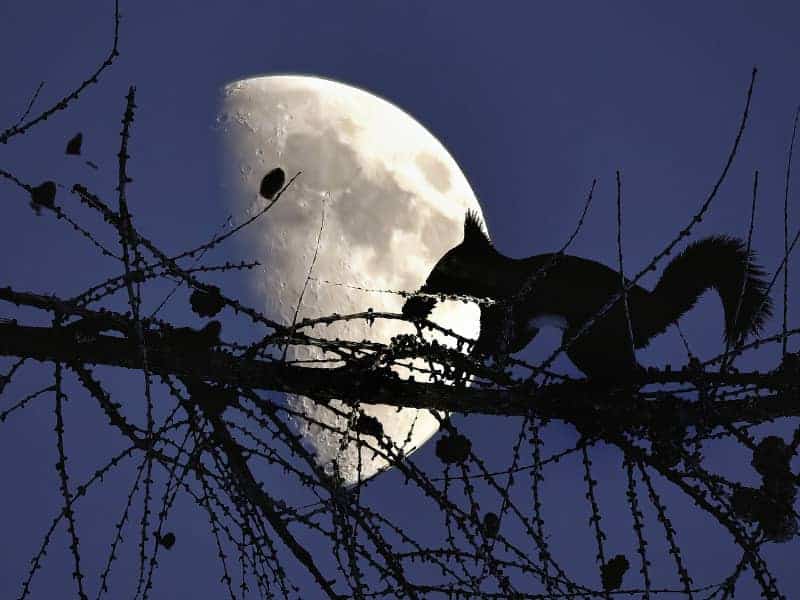
Squirrels nocturnal?
Whether squirrels are nocturnal can be answered quickly. The lively fellows belong to the diurnal rodents. Squirrels also do not hibernate. In summer you can see them foraging in the early morning and in the afternoon. In autumn they are busy all day and in winter their activity is limited to a few hours a day.
Squirrels nocturnal - What happens at night?
Since squirrels are not nocturnal, they spend the nights in their hutch or nest. You can find the burrow quite high in the trees. This is the best way for the rodents to protect themselves from predators. Each squirrel has more than one hutch, but those used in winter are protected from wind and water. So it stays dry and cozy warm inside, even in rough weather.
Can the squirrel see in the dark?
In the dark, the animals' vision decreases significantly. They can then also no longer recognize colors so well. This is probably also a reason why squirrels are not nocturnal.
If they nevertheless have to leave their hutch in low light, squirrels orient themselves with their hearing and their fine sense of touch.
What does the sprite look like?
Since squirrels are not nocturnal, they spend the nights in their hutch. This spherical burrow has a diameter of 30 to 50 cm. Inside, it offers a diameter of 15 to 20 cm. As a rule, a Kobel is built at least at a height of 6 meters. For the construction the squirrels use twigs, needles and leaves. So that it is cozy warm inside, mosses, grass and also leaves are used. Depending on the type of construction, the hutch can also be waterproof, which is especially advantageous in autumn and winter.
Each hutch has at least 2 entrances and exits. One of them always points downwards, as the rodents enter their nest from below. The second exit also serves as an escape route in the event of an attack.
It takes between 3 and 5 days to build a kobel. Outside the forest squirrels often build the kobel in attics, on the balcony, in holes on the wall of the house or on the outside of a building.
Since squirrels also need a place to sleep, you should never destroy one of their nests and respect their dwelling.
Squirrel nocturnal- provide sleeping place
You can also support the squirrel by providing him with a ready-made place to sleep. Suitable for this are nesting boxes, which can be purchased or built yourself.
Compared with a hutch made of branches and leaves, the nest box offers a number of advantages for the non-nocturnal squirrel. It is better protected from the elements and it has to spend less time maintaining the nest. A Kobel made of twigs and leaves must be maintained and repaired again and again. This is the only way to keep the goblet intact. With a finished nest box, the squirrel can save valuable energy, which it can use for foraging.
When do the squirrels sleep?
Squirrels are active during the day. They love the sun and often stay outside the cobble all day in summer. Only when it begins to dawn does the non-nocturnal squirrel return to its nest. It then sleeps and refuels energy for the new day.
What about hibernation?
You now know that squirrels are not nocturnal. They do not hibernate like hedgehogs do.
Squirrels hibernate. At the same time, their body temperature remains constant at 37 degrees and their breathing does not slow down. Certainly, rodents are less active than in the warm season. They then sleep a lot, which means that their metabolism is shut down and the frequency of the heartbeat decreases.
Even with low energy requirements, squirrels need to eat. Therefore, they regularly leave the goblet to eat something. Only in very cold weather they sometimes stay in their nest for several days without leaving it.
Squirrels often sleep between 18 and 20 hours during the cold season. This explains why you do not get to see the animals during the cold season.
Author

-
Garden animal - A life with nature
Welcome to my animal blog! My name is Dirk and I am happy to take you on my journey through the fascinating world of animals and gardening.
Born 54 years ago, I have had an insatiable curiosity for the animal world around me since childhood. Although I have moved professionally in other industries, my true passion has always been animals and nature. It is remarkable how a small garden has become such an important part of my life.
Many of my fondest memories are associated with the animals that share our home. Whether it's the curious squirrels that scurry across the trees in the morning, the colorful variety of birds that visit our feeders, or the busy bees and butterflies that pollinate our flowers, every moment with them is invaluable to me.
This blog is my contribution to share my experiences, discoveries and insights with like-minded people. Here I will share stories of unforgettable encounters with animals, give tips on gardening and creating wildlife-friendly habitats, and take you on my journeys through nature.
Thank you so much for being here!
Cordial,
Dirk aka garden animal
Last posts
- 27. February 2024PetsVeganes Hundefutter – Grün und Gesund?
- 18. January 2024ChickensOregano für Hühner
- November 27, 2023HamsterDiurnal hamsters
- November 24, 2023HamsterHamster hammock

